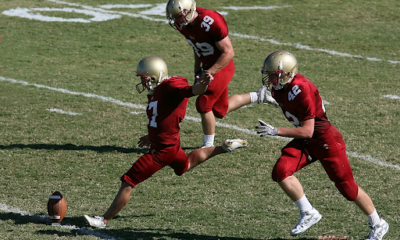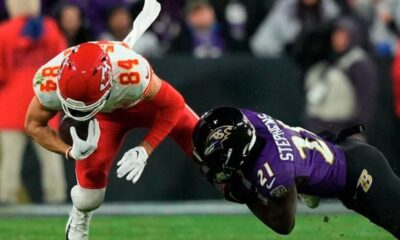
Spring football has become an integral part of the sports landscape, offering fans an alternative to the traditional fall season. While the dominant league commands the spotlight during autumn and winter, spring leagues have carved out a niche by providing year-round football action. The evolution of these leagues has been shaped by various factors, including rule innovations, player development opportunities, and shifting audience preferences.
The early attempts at spring football faced challenges, including financial instability and competition with more established leagues. However, recent developments indicate a growing appetite for offseason football. Advancements in broadcasting, digital media engagement, and strategic partnerships have contributed to the sustainability of these leagues. As more players look for opportunities to showcase their talent outside the fall season, spring football continues to gain traction.
Key Trends Shaping Spring Football
Spring football leagues often serve as testing grounds for new rules and innovations that could influence the sport’s future. Adjustments such as modified kickoff rules, unique overtime formats, and alternative play-calling methods have been introduced to enhance player safety and entertainment value. These experimental changes offer fans a fresh viewing experience while potentially influencing broader football regulations.
Another emerging trend is the use of advanced technology to assist officiating and player performance analysis. Instant replay enhancements, microchipped footballs, and real-time tracking of player movements provide valuable insights for coaches and fans. These innovations help refine gameplay and improve decision-making on the field.
Expanded Player Development Pathways
Spring football serves as a critical platform for athletes who may not have secured a roster spot in major leagues. Many players use this opportunity to refine their skills, gain professional experience, and attract attention from scouts. Quarterbacks, in particular, benefit from additional reps in a competitive environment, allowing them to develop their decision-making and leadership abilities.
For undrafted players and those recovering from injuries, spring football offers a second chance to prove themselves. Several athletes have leveraged strong performances in these leagues to secure contracts at higher levels of competition. This developmental aspect enhances the overall quality of the sport and provides fans with compelling storylines of perseverance and career resurgence.
The Impact of Media and Streaming Platforms
The way fans consume football has evolved with the rise of streaming services and digital media platforms. Spring football leagues have capitalized on these advancements by offering live broadcasts, interactive content, and behind-the-scenes access. Social media engagement plays a significant role in connecting fans with teams and players, fostering a deeper sense of community with agen sbobet.
Traditional television contracts remain important, but streaming services provide flexibility for viewers who prefer on-demand access. Digital platforms also enable leagues to showcase highlights, interviews, and analytical breakdowns, making it easier for fans to stay engaged beyond game days. This shift in media consumption has allowed spring football to reach a wider audience and attract new demographics.
The Role of Players in Shaping Spring Football
Spring football leagues create valuable opportunities for athletes seeking professional exposure. Many players who may not have been highly recruited or drafted find an avenue to demonstrate their capabilities on a national stage. This environment allows rising stars to gain confidence, refine their skills, and adapt to the pace of professional competition.
The importance of player development extends beyond the field. Spring leagues emphasize mentorship programs, financial literacy education, and career transition support to help athletes navigate the challenges of professional sports. By investing in holistic development, these leagues ensure that players are prepared for long-term success both within and beyond football.
Veteran Players Seeking Career Longevity
Experienced athletes who have spent time at the highest levels of competition often turn to spring football as a way to extend their careers. Whether returning from injury, seeking a fresh start, or maintaining their form during the offseason, these players bring a wealth of knowledge and leadership to their teams.
Veterans contribute to the league’s credibility by elevating the level of competition and mentoring younger teammates. Their presence also attracts fan interest, as audiences recognize familiar names and follow their journeys. The blend of experienced professionals and emerging talent creates a dynamic and competitive atmosphere on the field.
Fan Engagement and the Growing Popularity of Spring Football
Spring football leagues have made efforts to establish strong connections with local communities. Fan engagement initiatives such as youth programs, charity events, and interactive game-day experiences help foster loyalty and support. By creating a family-friendly environment, these leagues appeal to a broad audience, including young fans who may be experiencing live football for the first time.
Ticket pricing strategies also play a role in making games accessible to a wide range of fans. More affordable options compared to major fall leagues allow families and casual spectators to attend games, creating a vibrant and energetic atmosphere in stadiums. This accessibility has contributed to the steady growth of fan bases across different regions.
The Influence of Fantasy Sports and Betting
Fantasy football and sports betting have significantly influenced fan engagement in spring leagues. The rise of fantasy competitions allows fans to become more invested in player performances, while legal sports betting adds an extra layer of excitement to each game. Leagues have embraced these trends by incorporating official partnerships with fantasy platforms and betting providers, further enhancing the viewing experience.
Interactive features such as real-time statistics, predictive analytics, and live in-game betting options have increased audience involvement. As technology continues to evolve, these engagement strategies will likely play an even greater role in shaping the future of spring football.
The Future of Spring Football
The continued success of spring football depends on sustainable financial models, strategic partnerships, and consistent fan engagement. Expansion efforts, including potential new teams and cross-market collaborations, could further enhance the league’s presence. Strong leadership and innovative marketing strategies will be essential in maintaining long-term viability.
The adaptability of spring football to modern sports trends, such as data-driven analytics, health monitoring technology, and interactive fan experiences, will also determine its trajectory. As the sports industry evolves, spring football leagues must remain flexible and proactive in their approach to growth.
The Broader Impact on Football Culture
Spring football’s influence extends beyond the games themselves. By providing alternative pathways for players, testing new rule implementations, and embracing digital engagement strategies, these leagues contribute to the overall evolution of football. The lessons learned from spring football experiments often trickle into mainstream leagues, shaping the sport’s development at all levels.
The increasing acceptance of year-round football suggests that spring leagues will continue to be an important fixture in the sports calendar. As they refine their structure, enhance player opportunities, and build stronger connections with fans, these leagues have the potential to leave a lasting impact on the football landscape.









